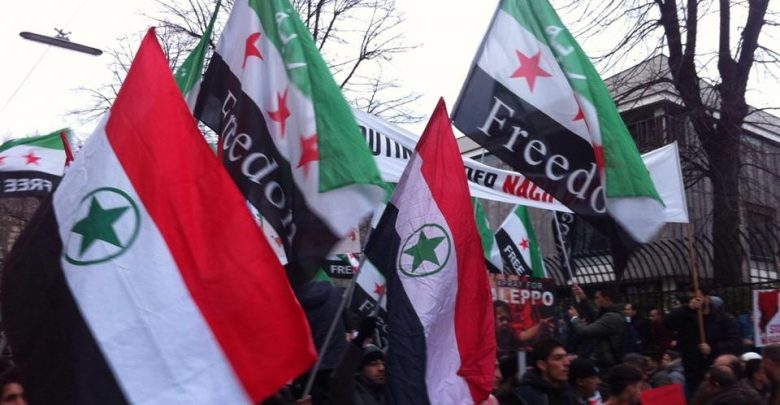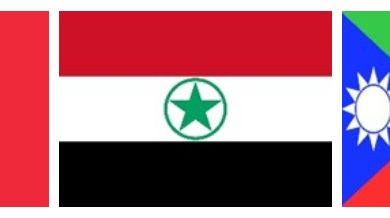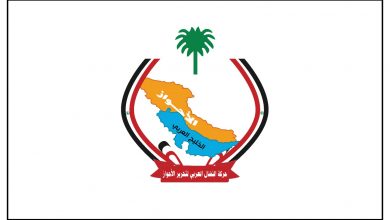Ahwaz and Syria: brothers and sisters sharing pain, grief in struggle for freedom

Ahwazna
The Iranian regime is rampaging across the Middle East, spreading terror here and there. Syria and Ahwaz are the most harmed spots due to these schemes.
The regime has been annexing the Arab area of Ahwaz since the 1920s, killing, arresting and torturing its people and destroying their homeland using every which way.
In Syria, the intervention is relatively recent but was massively devastating. The Iranian regime had decided to intervene in Syria after the uprising that broke out in March 2012.
Tens of thousands of the Iranian militiamen poured into Syria to defend Bashar al-Assad, ally of the Iranian regime, slaying civilians mercilessly on sectarian motives. Both regimes consider the Sunni peoples their enemies.
The fact revolutionaries in Syria and Ahwaz are facing the same enemy and have common woes and tragedies prompted the two sides to aid each other in the push on the Iranian terror and oppression.
Common grievances
Iran, through successive governments and even before the outbreak of the 1979 revolution, has been pursuing policies aimed to expand its areas of influence in the region.
Therefore, earlier in the 20th century it occupied Ahwaz and one century later it sent thousands of Shiite fighters to get a foothold in Syria.
The regime is implementing policies aimed to change the demographic in Ahwaz, according to reports.
And the Iranian government is doing the same thing in Syria, as experts have stated.
Speaking to CNN Arabia, political analyst Amgad Taha, who chairs the British Center for Middle East Studies, and focuses on the Iranian affairs, said what is going on in Syria is a clear racial discrimination aimed to enforce demographic changes in the areas which have the majority of the Sunni populace.
He asserted Iran is standing behind the sectarian purges in Syria, citing what it did in the Arab region of Ahwaz, and saying these atrocities have started since 1925.
"Many Many Ahwazis have been forced from home due to the sectarian Iranian policies implemented under successive regimes," Taha said, citing figures suggesting those displaced by the Iranian regime in Ahwaz to exceed 4 million.
"Iran had enforced policies of ethnic cleansing in Ahwaz long ago. And today it seems it is Syria's turn to taste the same woes in cahoots with Russia," the analyst noted.
Ahwazi aid
Tasting unspeakable injustices at the hands of the Iranian regime, the Ahwazis decided to extend their hands to the Syrians to get rid of Assad regime, which butchered tens of thousands and made millions internally and externally displaced.
In late January 2015, Arabi 21 reported an Ahwazi engineer has been killed in Syria by Assad forces in the battles that took place in Qalamoon and Arsal.
In Ahwaz, the Iranian security apparatuses prevented the relatives of the engineer, hailing from Bani Kaab tribe, from setting up a consolation tent or performing funeral ceremonials for him.
Furthermore, the security forces of the Iranian regime arrested the engineer's father along with some tribal leaders.
The authorities said that the Ahwazi engineer who lost his life in defense of the Syrian cause is a terrorist. And he does not deserve to be honored posthumously by holding the customary religious ceremonials.
The engineer, named Adnan bin Moharib al-Fadeli al-Haei, graduated from Sharif University of Technology. He got the Master's degree in computer engineering and then worked as a professor at al-Khafagia University in Ahwaz. He mastered Persian and English along with his mother tongue, the Arabic.
Fadeli was one of the outstanding figures and activists in the capital city of Ahwaz. He runs several symposia dealing with the political and literary arenas in the city during the era of the former president of Iran Mohammed Khatami.
According to the Arabi 21 report, the Ahwazis have played a pivotal role on the battlefield, since they helped expose the Iranian Revolutionary Guards affiliates who have been engaged in the deadly battles there.
Citing this report, commentators said the Iranian regime looks upon the Syrian and Ahwazi revolutionaries as its enemies. For the regime, there is no difference between the two factions: the Ahwazis are as much hated by the Iranian regime as their Syrian peers.
Solidarity
Earlier in 2011, Al-Arabiya posted a video footage showing Syrian demonstrators, who took to the streets in Deraa against Assad, raising the Ahwazi flag. The move, according to the report, came in response to the Iranian support for the Assad regime.
In response, more than 50 Ahwazi activists have issued a joint statement, displaying solidarity with the Syrian people in the face of the war crimes and cruel acts perpetrated by Assad regime's forces against the peaceful civilians.
Syrian presence
The Syrian revolutionaries and oppositionists have been present in the Ahwazi forums held for exposing the policies of the Iranian government. Also, the Ahwazi cause is always in the mind and heart of Syrians.
Ahwazi activists in exile, shortly after the outbreak of the uprising, partook in protests staged by Syrian peers in front of regime's diplomatic missions in the European cities, especially London.
In April 2015, the Arab Struggle Movement for the Liberation of Ahwaz (ASMLA) has organized an international conference to mark the 90th anniversary since the Iranian occupation of Ahwaz.
A lot of Syrian opposition leaders showed up in the two-day event, including Nasr al-Hariri, the former head of the Syrian Opposition Coalition and George Sabra, the Syrian National Council.
Mostafa Qassom, a member of the Syrian National Change Current, said his participation came in order to support the Ahwazi cause. He added the Syrians and Ahwazis have the same plight and one enemy.
"Our support for the Ahwazis weakens the Persian regime, which is massacring the innocent civilians in the two spots," the Syrian activist noted.
In a recent conference held by ASMLA in January in Brussels, Syrian opposition figures and members of the Syrian community noticeably partook in the event.
There, the head of the Syrian National Council George Sabra said the end of the Iranian terror will start if its terrorists in Syria are wiped out.
Yet chants demanding the fall of regimes in Syria and Iran interrupted speeches of the event's speakers on several occasions.
Some Ahwazi activists launched calls on their Syrian peers to exchange IRGC captives with Ahwazi prisoners and activists locked up by the Iranian regime.
Commentators said the Syrians and Ahwazis have been united by pain. They have the same enemy, experience the same woes and go through tragedies bearing the fingerprints of the Iranian regime.
Brothers in the cyberspace
The Ahwazi activists took to Facebook to support the Syrian cause. A page on Facebook was launched by Ahwazi activists and focused on covering the news of the Syrian revolution.
"The Ahwazi people are greeting the heroes of Syria. And may God grant them victory over Iran and Hezbollah militias," the activists wrote on the page.
They vowed to stand shoulder to shoulder with the Syrian people until quashing regimes of Assad and Khamenei.
Experts said the Ahwazi solidarity with Syria is caused by the quasi-identical conditions they are living through.
"The two nations, the Syrians, and Ahwazis, face horrific repression. And they are repressed by the same regime, this is why they are close to each other," they said.
"They are brothers of pain," they concluded.
By Mostapha Hassan, an Egyptian freelance journalist.


